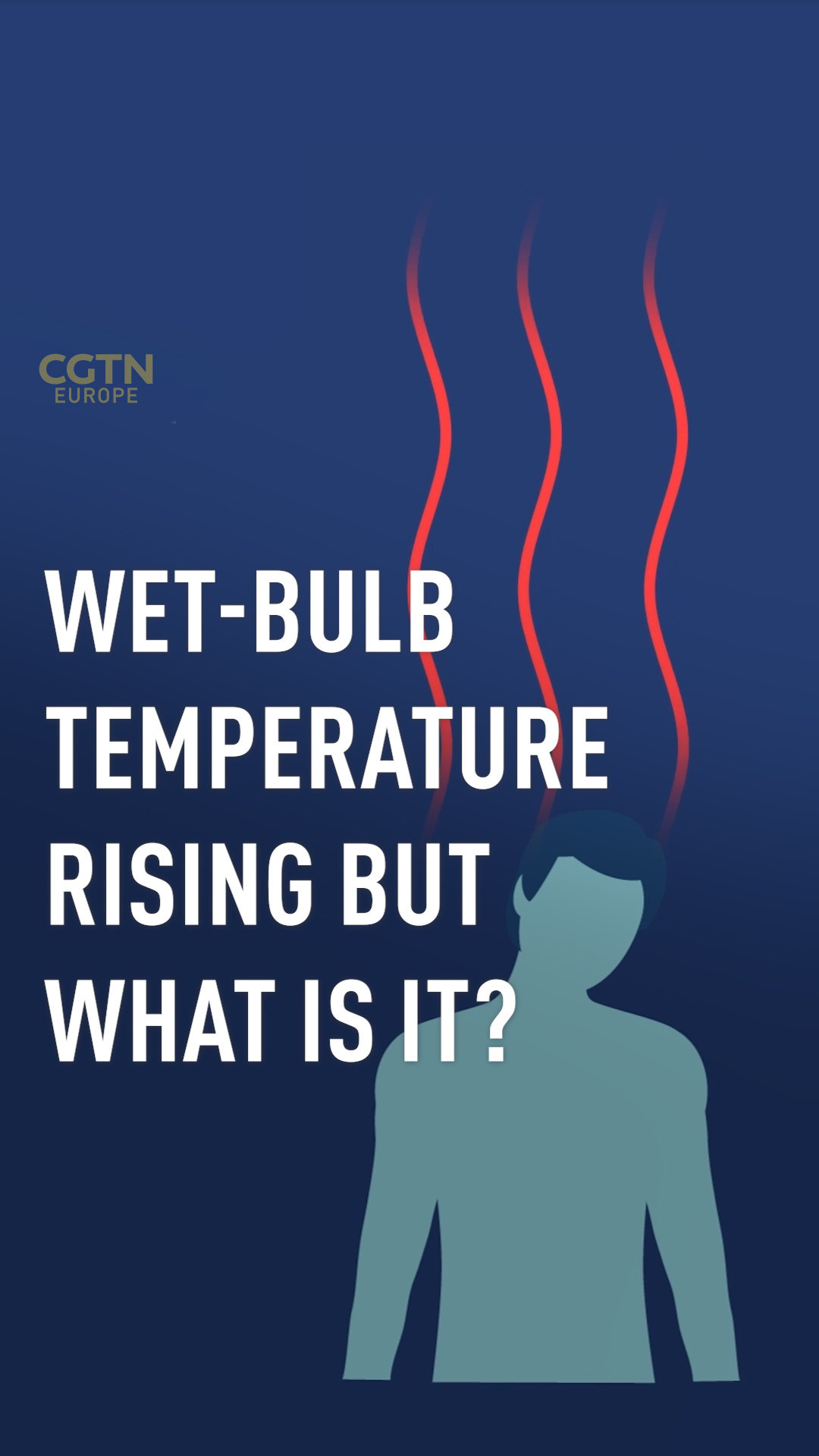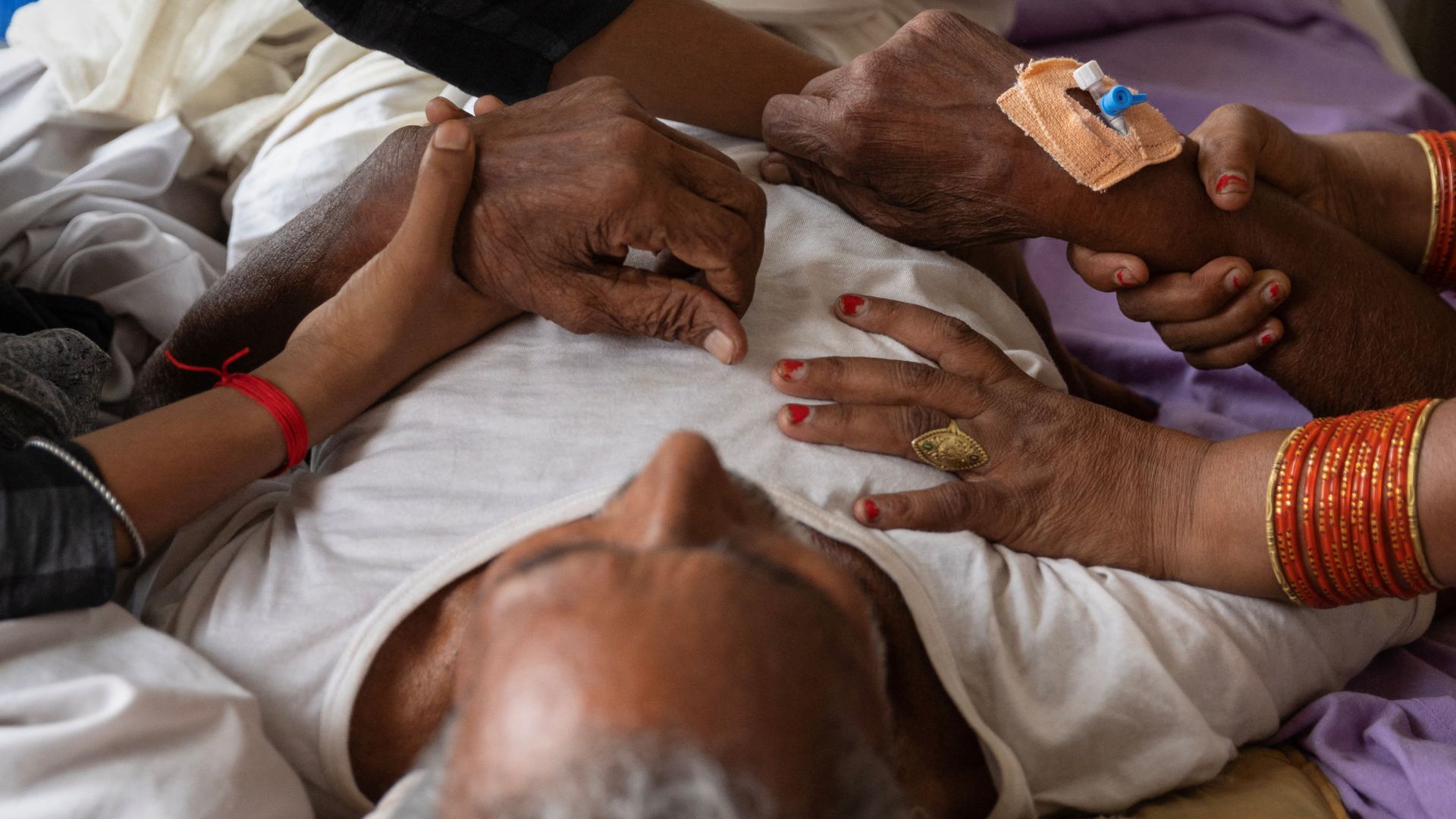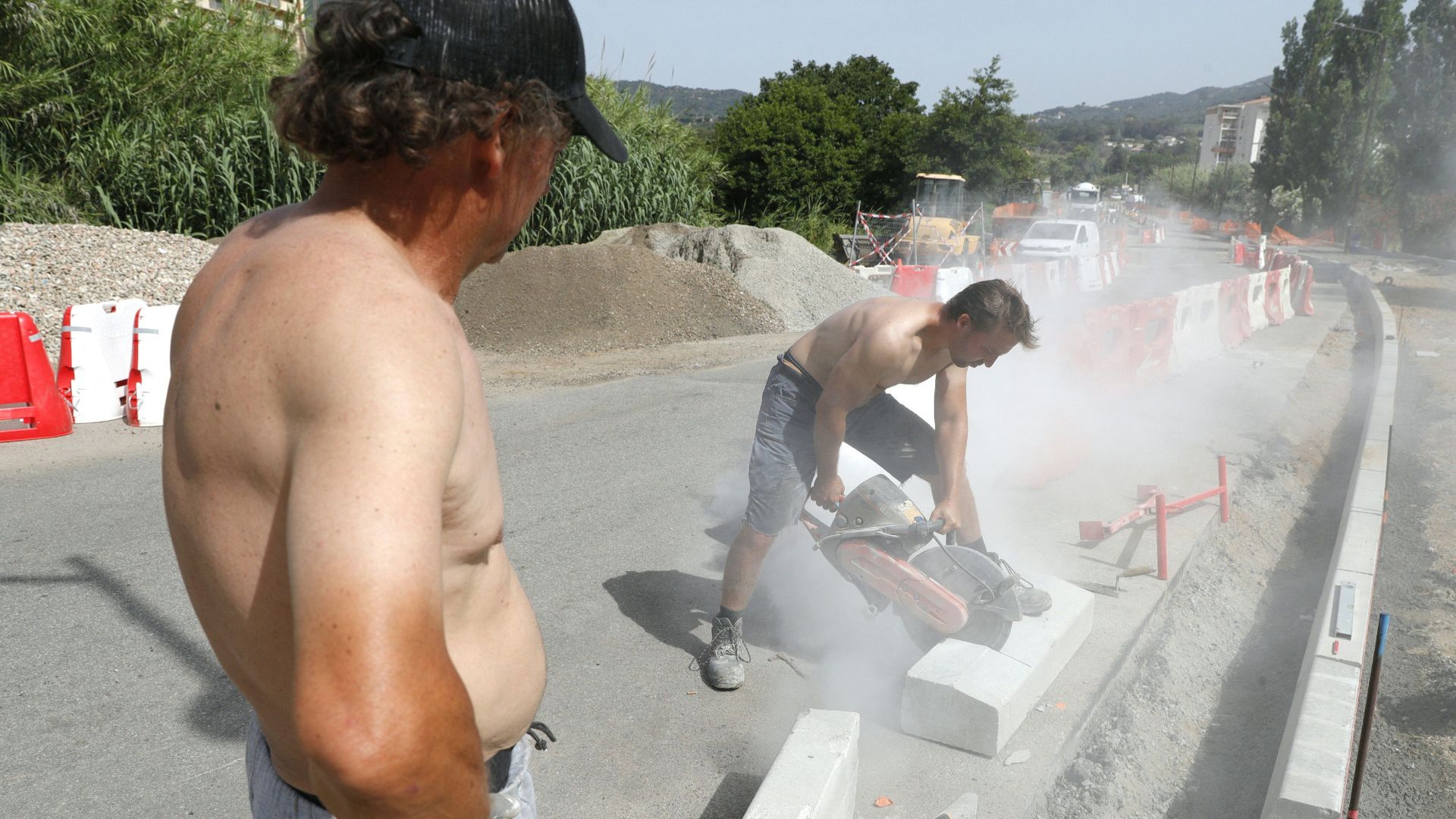01:37

The deaths of at least 99 people in northern India in the midst of a heatwave that has seen the Mercury reaching 46C, has highlighted again the risks of soaring global temperatures on public health.
A phrase that's been mentioned in many reports of the deaths is 'wet bulb' temperature, but what is it and why is so important to human survival?
What does wet bulb temperature mean?
Wet bulb temperature (WBT) is a way of measuring the combination of high temperatures and humidity. Kristina Dahl, principal climate scientist at the Union of Concerned Scientists, told CGTN: "If you picture an old-fashioned thermometer with a bulb at the bottom containing mercury and a rising stem, when it's hot that mercury expands and rises higher up the thermometer. That's what we call the dry bulb temperature.
"With a wet bulb temperature you take a wet cloth and wrap it around the bulb of the thermometer and the water from that cloth evaporates and cools the bulb a little so the mercury doesn't rise as far.
"If humidity in the surrounding air is high, less evaporation occurs and the WBT stays close to the dry temperature, but can never surpass it.
"The reason people measure WBT is because something similar happens in our body to what's happening with that wet cloth. When it's humid our sweat doesn't evaporate as effectively off our bodies which makes it harder for our bodies to cool."

Relatives hold hands of Jagdev Ram, 80, who is suffering from breathing difficulties inside a hospital ward in Uttar Pradesh. /Adnan Abidi/Reuters
Relatives hold hands of Jagdev Ram, 80, who is suffering from breathing difficulties inside a hospital ward in Uttar Pradesh. /Adnan Abidi/Reuters
Why are high WBT temperatures of concern?
Past a certain point, generally considered 35C WBT, we cannot regulate our internal body temperature by sweating and our body temperature rises steadily. A healthy person can only survive for around six hours at this threshold before our organs start failing.
According to Dahl: "Initially you might feel something like a headache, slight dizziness or irritability but at the most severe end you can end up with heatstroke, which can be fatal. When it's very hot and humid we see increases in the number of people going to emergency rooms for cardiac issues."
Dahl says it's also common to see exacerbations of respiratory issues like asthma, while extreme heat exposure is even associated with pre-term labor in pregnant women.
She says: "With those survivability limits we're talking about, if you're outside for several hours, you have a very severe risk of heat-related fatality. It's not like you step outside and instantly die. It's a far more gradual process as your body accumulates heat over time."
As global dry temperatures soar to 40C and beyond, we see a dangerous rise in WBT. An alarming recent study by W Larry Kenney, physiology professor at Penn State University, suggested that "the critical wet-bulb temperature is closer to 31.5C."
Additional factors to humidity and temperature also affect our body temperature, including solar radiation and wind speed, but scientists increasingly see high WBT as critical.
Who is at most risk?
Those with underlying heart or respiratory conditions are vulnerable, while elderly people become less able to thermoregulate. "Elderly people are often also on medications, a wide range of which can disrupt the ability to regulate its temperature," explains Dahl.
Young children and pregnant women are at risk. Those working outdoors, like builders or farmers, are more exposed to heat and may lack access to cooling.
Urban dwellers are more at risk than those living rurally. "All of the man-made materials in urban areas, like concrete and asphalt, absorb heat during the day and radiate it back at night, so our urban areas are hotter than surrounding areas with more vegetation and fewer man-made materials," said Dahl.
She adds: "It's critical that we start thinking about people in urban areas dealing with the added effect of the urban heat island, as we call it."

Employees working at 39C on the French Mediterranean island of Corsica, in Ajaccio. /Pascal Pochard-Casabianca/AFP
Employees working at 39C on the French Mediterranean island of Corsica, in Ajaccio. /Pascal Pochard-Casabianca/AFP
Where is worst affected?
A World Weather Attribution academic study found that climate change made the heatwave that hit much of South Asia in April at least 30 times more likely to reoccur. India has seen several temperature records broken this year, with Delhi hitting a new high of 49C in May.
"In most parts of the world, the frequency and severity of heat extremes is increasing and we know that these are attributable to human-caused climate change," argues Dahl.
Another study stated that occurrences of WBTs exceeding 30C, considered extreme humidity, more than doubled between 1979 and 2017. WBTs exceeding 35C have been reported in Australia, Pakistan, India, Mexico and Saudi Arabia.
"Low-lying tropical areas tend to be the first that we see experiencing those 35 degrees Celsius wet bulb temperatures around the world," Dahl told CGTN.
If temperatures continue to rise, some regions might become uninhabitable, leading to mass migration.
Dahl is alarmed by her own findings in the U.S., "between now and mid-century we could see approximately a doubling in the number of extreme heat days across the country on average."
What about Europe?
In 2022 Portugal saw temperatures reach 47C, while the UK saw the mercury pass 40C, smashing its previous record by 1.6C and countries like France, Spain, and Germany are seeing repeated heatwaves.
There is some good news, though, says Dahl.
"One thing that's encouraging is that in 2003 there was a major heatwave in Europe that killed tens of thousands of people but in the wake of that European countries really tried to build more heat resilience in their communities. Now when we see these heatwaves, we're not seeing the death toll we would have seen 20 years ago."

A woman uses a fan as she wears a cloth that protects her from the sun on a street, amid a heatwave warning in Shanghai, China. /Aly Song/Reuters
A woman uses a fan as she wears a cloth that protects her from the sun on a street, amid a heatwave warning in Shanghai, China. /Aly Song/Reuters
What mitigation and prevention measures can we take?
Scientists say limiting global heating to 1.5C above the pre-industrial era would prevent the majority of the tropical area, home to 40 percent of world population, experiencing regular breaches of the 35C survival limit.
Dahl wants governments to prepare communities for extreme heat, ensuring access to cooling in their homes and communities, while outdoor workers also need protection.
"We like to say that all heat deaths are preventable because air conditioning and access to cooling dramatically reduce the risk of death from heat related causes."
Dahl is aware of the irony of that statement. "If we are running that air conditioning using energy that comes from fossil fuels, we're just contributing to the further warming of our planet. So it's critical that we wean ourselves off them and use clean energy sources like solar and wind power, because we are going to see an expansion of the need for air conditioning around the globe."
She's among many climatologists who believe that the world's richest countries need to not only pledge cuts in their greenhouse gas emissions, but start implementing those pledges now. Or a catastrophic future could await us.

Subscribe to Storyboard: A weekly newsletter bringing you the best of CGTN every Friday